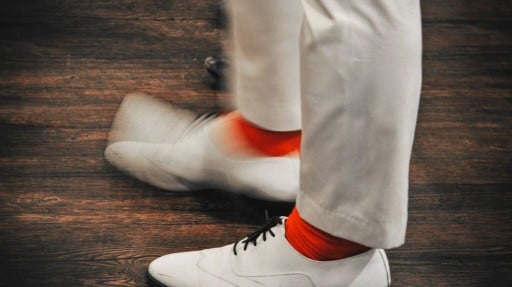Weight loss: Dancing can benefit people with obesity, overweight

- Dancing offers a valid way to exercise, and, as it is so much fun, it may be easier to keep at it long-term.
- A new meta-analysis assessed evidence collected in 10 studies that considered the health benefits of various types of dance for people with overweight and obesity.
- Dance arguably provides more entertainment than traditional exercise while it improves mood and executive function, and provides a chance to enjoy more social interaction.
Exercise, while it is recommended for weight loss, can be difficult to maintain over the long term. It is often repetitive and monotonous, frequently hard, and often solitary.
Some researchers have found, however, that dancing can be an effective way to lose weight. As a physical activity, dancing is typically more fun than conventional exercise, and can even provide a venue for social interaction.
A recent meta-analysis that assessed the evidence brought forth by 10 studies investigating the benefits of dance for people with overweight and obesity has drawn this conclusion.
The analysis found that people who regularly engaged in dance exhibited improvements in body mass index (BMI), waist circumference, percentage of body fat, and kilograms of fat lost compared to people who did not dance.
The paper appears in
In the studies, numerous dance forms were included, including step-aerobic dance, cheerleading, creative dance, Zumba, bhangra dance, traditional dance, dance video games, square dance, simplified dance, and aerobic fitness dance.
With the exception of square dancers, who danced for 5 days each week, and bhangra dancers, who danced twice a week, all other study participants had three dance sessions weekly.
Dance sessions ranged from 40 minutes to 90 minutes. All of the studies lasted at least 4 weeks, most lasted for 3 months, and one lasted for a year.
Why dance may be better than other forms of exercise
The key to any successful exercise program is adhering to it past the initial decision to get started, and dancing may offer enough entertainment value to make this more likely.
Dr. Menka Gupta, functional medicine doctor at NutraNourish, commented on the findings of the meta-analysis, noting that it is not the first to come to the conclusion that dancing provides health benefits.
She noted that dance provides enough pleasure to warrant consideration as a strong exercise option for people interested in improving their physiological health.
Dr. Gupta also pointed out that dancing may offer additional benefits beyond improving one’s BMI. “Enjoyable physical activity can also boost mood and reduce stress, providing additional mental health benefits of exercise,” she told us.
“Pleasure is also a good motivator, as pleasure is linked to dopamine. Enjoyable physical activity also seems to promote better sleep, providing additional health benefits,“ added Dr. Gupta.
Dr. Khubchandani further cited a
What is the most beneficial kind of dancing?
But what is the best form of dance for people seeking to improve their health?
Dr. Gupta put it simply: “When people ask me about the best form of exercise, my usual response is, ‘something you enjoy so that you will stick with it over the long term and be consistent with it’. “
Dr. Khubchandani had a similar point of view, adding that one should choose a financially affordable dance form that you “can engage in consistently, helps you build a routine and social relationships, and is preferably high-intensity (e.g., hip-hop, Zumba, etc.).”
Dr. Gupta suggested ballroom dancing as a great option for older individuals, or for those seeking something with lower intensity: “It is great for social interaction and helps develop a feeling of community. It is also great for improving balance, posture and cardiovascular health.”
She also endorsed Zumba, which typically incorporates interval training alternating fast and slow rhythms. It is, Dr. Gupta said, a form of high-intensity interval training that can also help a person stay sharp mentally.
“[Zumba] also improves mood and cognitive skills such as decision-making. It helps develop new neural connections, especially in regions involved in executive function, long-term memory, and spatial recognition.”
– Dr. Menka Gupta
As a bonus, she said, Zumba helps reduce stress, and increases levels of the feel-good hormone serotonin.
Escobedo said she “believe[d] that all forms of dance are beneficial to health.“
“Ballet,” she suggested, “is a great way to work on muscle strength, balance, posture and cardio endurance.”
“Modern/Contemporary dance is another style that is beneficial for similar reasons to ballet, but contemporary dance has dancers getting up and down from the floor, which builds better agility and core strength,” added Escobedo.
She also noted that the most popular dance class, in her experience as an instructor, is a cardio dance class that promotes “weight loss, cardio endurance, balance, agility, coordination, memory and so much more.”
Class members get from 3,000 to 5,000 steps in one 50-minute session.
“It feels more fun than a chore like physical activity can sometimes feel,” suggested Escobedo.
Dr. Gupta mentioned one other consideration when settling on a dance: Choosing one that resonates emotionally with you and those you will be dancing with.
In her case: “My personal favorites are Zumba and Bollywood dancing. Bollywood dancing takes me back to my childhood, where we would choreograph and dance to every new Bollywood beat. That brings a lot of memories and connections to childhood friends and family.”
